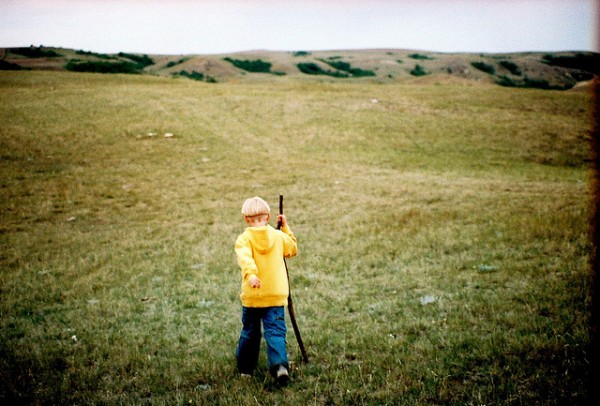
Environmental issues are a bigger part of the collective consciousness than ever before. Recycling has become the norm, water conservation is a major issue in the American West, and environmental disasters like the Deepwater Horizon oil spill are front-page news. Yet by many measures, Americans’ relationship to nature is at an all-time low, as we spend more time inside in front of screens. In advance of a panel on “Why We Love Trees” at Zócalo on April 21, we asked experts about whether environmentalism has improved our relationship to nature.
We’ve Never Been More Distant From Nature

The “Age of Environmentalism,” the world’s great environmental awakening, began in 1962 with Rachel Carson’s publication of Silent Spring. In this modern classic, Carson warned of the dangers that pesticides posed to the environment. In a broader sense, however, Silent Spring raised the specter of humanity’s exploitation of nature becoming its very undoing.
Since Carson’s time, the environment has become a national – even international – policy issue. Nowhere has the impact been greater than in our educational system. Prior to Silent Spring, we never heard mention of “the environment”, while in academe today curricula are replete with courses on the topic; indeed, one can even earn a college degree emphasizing “the environment.”
Students may study the environment, legislators may write laws to protect it, but it is my belief that none of this has brought us closer to nature. The evidence is all around us:
- Public opinion polls indicate that “the environment” has declined as a national policy priority. Only 2 percent of American’s currently believe that it should have precedence on the legislative agenda.
- The National Park Service indicates that visits have declined about 6 percent since 1999. The decline has been attributed to rising gasoline prices and a general lack of interest in the out-of-doors.
- Recent Gallup polls indicate that the trend in public skepticism regarding global warming, possibly the most serious long-term threat to the environment, is increasing. Furthermore, it has become a partisan issue with 66 percent of Republicans, vs. 22 percent of Democrats, claiming the threat is exaggerated.
- The threat posed by the Deep Water Horizon offshore platform, the site of America’s greatest environmental disaster of our time, was cavalierly dismissed by the government as a categorical exclusion in the National Environmental Policy Act process.
- Recent attempts by the GOP to defund the EPA have met with almost no resistance from the public or the opposing Democrats.
In his best-selling book, Wilderness and the American Mind, Rod Nash argues that 19th century America’s appreciation of the natural world, oddly enough, began to increase only after people began forsaking a bucolic life to move to the city, far removed for the wilderness. Such is certainly not the case today. Americans seem more distant than ever from nature despite the Age of Environmentalism.
J.E. de Steiguer is professor in the School of Natural Resources and the Environment at the University of Arizona. He is the author of Wild Horses of the West: History and Politics of America’s Mustangs.
—————————————————————————————————————
We May Not Be Outside, But At Least We’re More Aware

The ‘age of environmentalism’ may not have brought us closer to nature in the most romantic model of Henry David Thoreau and John Muir. People are not necessarily spending more time in nature; however, they are changing how they think about the natural world and use environmental resources. Whether it is recycling in the home or workplace, working to reduce water consumption or buying organic foods, there does seem to be a remarkable uptick in demand for greener products and services.
Beyond individual demand, partnerships between landowners, corporations, advocacy groups and entities at local, state and national levels have led to innovative efforts to recognize the value of nature. From programs that pay landowners to protect and grow wetlands and forests as natural carbon sinks and water filtration systems, to working with major corporations to “green” their supply chain, there is growing recognition that nature’s “services” are a valuable component to protecting and improving our quality of life and the economy.
This recognition needs to grow now that the world’s population is expected to increase to nine billion people by 2040. As population increases, so will demand for food, water, energy, recreation and other services that nature provides. As demand for the world’s resources grows, so could the environmental damage to our oceans, climate, land and wildlife. Fortunately, innovative programs that recognize and reward environmental stewardship are expanding. This ultimately brings us closer to nature.
David Festa is vice president for the West Coast and the Land, Water, Wildlife program at the Environmental Defense Fund.
—————————————————————————————————————
We’ve Made Children Afraid of Interacting With the Environment

Indeed, visits to national parks have been trending down since 1987; in 2008, fewer people entered national parks than they did 20 years ago. While researchers debate the root cause of people spending less time outside and its associated impacts on mental and physical health, there is little debate that this trend spells trouble for our commitment to conservation.
What can we do to get our kids out of the virtual world and into the woods? First, we must say no to the negative eco-propaganda that dribbles down on them all day. For example, there are all sorts of scary green monsters, from cow eaters to forest destroyers to villainous corporations discussed in schools and in children’s books. When asked what global warming means, many kids have absolutely no idea, but they know it’s caused by humans.
Green mantras are also seeping into classroom textbooks. Authors of textbooks are influenced “by an ideological view that presents human beings as evil,” according to Dr. Michael Sanera, director of the Center for Environmental Education Research. Sanera compared science textbooks used in sixth through 10th grades in Wisconsin. Though he felt the textbooks all did a good job explaining the carbon cycle and greenhouse effect, nearly all focused only on the human causes of climate change and all predicted catastrophic impact. What is often left out is all of the postiive impacts humans are having on the environment. The basis of a better environment turns out to be the same “secret” behind other success stories, human ingenuity. As humankind grows more creative in using the natural world to improve life, the natural world responds with bounty. The well-known and respected professeor Julian Simon believed that the ultimate resource is human ingenuity. “With every mouth comes two hands and a mind,” he said.
Rather than scaring susceptible young people about the environment, why not teach them the truth and get them outdoors? To really “teach the truth,” Holly Fretwell, author of The Sky’s Not Falling, says, “we must teach students of all ages to become critical thinkers and to gain knowledge, not just information, from science.” Demonstrating the complexities of science and providing them with tools to find and evaluate evidence creates self-reliance, critical thinking and hopefully enough curiosity to go outside and explore nature.
Laura E. Huggins is a research fellow at the Hoover Institution at Stanford University and at the Property and Environment Research Center in Bozeman, Montana. She is the co-author of Greener Than Thou: Are You Really an Environmentalist?
*Photo courtesy of Trevor Manternach.



